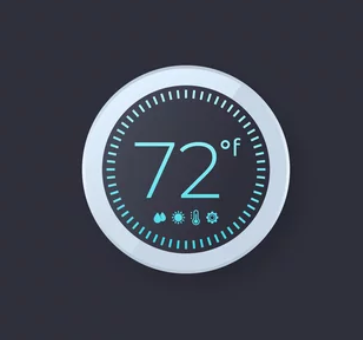Thermostat Questions You Always Had but Didn’t Ask

OK, you might know some of the answers, but we thought a fun-filled moment about unknown (or little-known) factoids about thermostats might be entertaining and exciting. And if you’re on the TV game show and you get hit with a thermostat-related question and you need to answer … well, we’ve just given you a head start.
Who invented the forerunner to the thermostat?
Cornelis Jacobszoon Drebbel (1572 – 1633) and he was apparently a brilliant inventor. He built the first navigable submarine in 1620 and an innovator who contributed to developing measurement and control systems, optics and chemistry. Possibly the earliest recorded example of thermostat control was Drebbel’s invention of a mercury thermostat [before TRC could recycle it] to regulate the temperature of a chicken incubator. This is one of the first recorded feedback-controlled devices.
One of the first industrial uses of the thermostat was regulating the temperature in poultry incubators. Charles Hearson, a British engineer, designed the first modern incubator for eggs that was taken up for use on poultry farms in 1879, thus demonstrating a practical, industrial use of a thermostat.
Source: Wikipedia
Are any thermostats in a museum?
Not only is a thermostat in a museum, there is one in the Smithsonian Institution’s National Museum of American History in Washington, D.C, because this breakthrough item is a part of American history.
The museum is home to Honeywell’s Round T832 Thermostat. It was a Honeywell Round T832 day-night thermostat that was manufactured by the Minneapolis-Honeywell Company around 1960. Renowned industrial designer Henry Dreyfuss designed the iconic “Round” line of Honeywell thermostats that debuted in 1953. This 1960 model has two built-in red indicators that allow for the setting of two temperatures and a “set-back timer” that would automatically switch between the two thermostats. Starting in 1953, Honeywell offered the Round in various colors to match any home’s color scheme for a price of $12.80.
Source: The National Museum of American History
I’m thinking about collecting antique thermostats. Where can I find one?
We don’t know of any antique thermostat collectors, but we found antique models available on eBay. One included a vintage 1900 Minneapolis regulator antique thermostat predecessor for $69. There was another Mercury Temperature Clock Thermostat Time for $100. If you’re looking for antiques, eBay might be a source, but be sure to recycle the mercury if it’s still in the thermostat.
Source: eBay
Is the U.S. Government a reliable source for thermostat information?
It is. If you head over to the U.S. Department of Energy (www.energy.gov) and type in “thermostats” in the search engine, you’ll find 29 “hits” or results. They range from a page on Programmable Thermostats and an article on Thermostat Savings This Winter to an article describing a DOE statement on Energy Star Thermostat Report.
Source: U.S. Dept. of Energy
A friend told me that you could place a thermostat anywhere in a home or office and get the same results. Is that true?
It’s not true. Your thermostat’s location can affect your heating and cooling efficiency. For example, if you put your thermostat next to a window or a door, it may produce “ghost readings,” which keep the thermostat from detecting the home’s actual temperature and could limit how your HVAC system heats and cools your home. This also applies if your thermostat is in line with direct sunlight.
Source: https://irelandhtg.com

